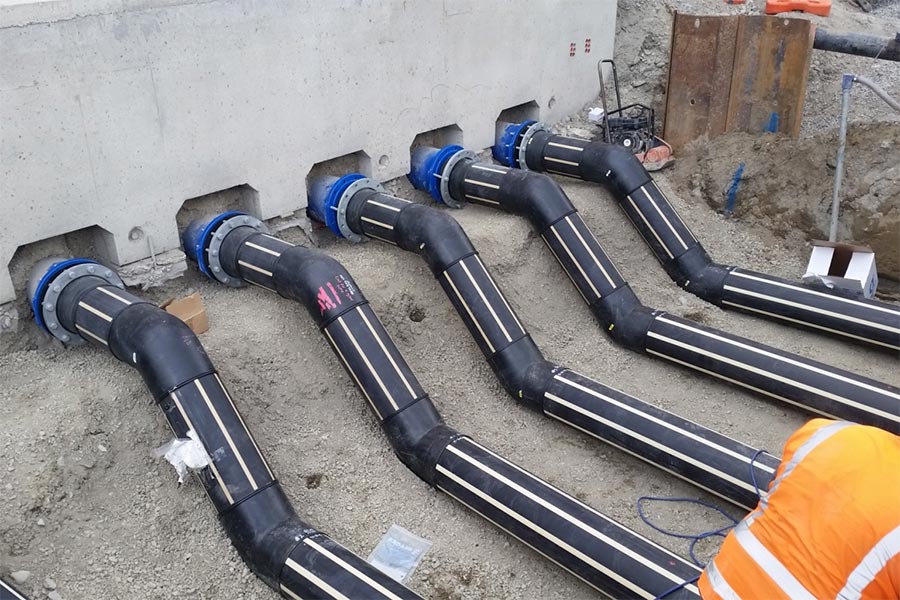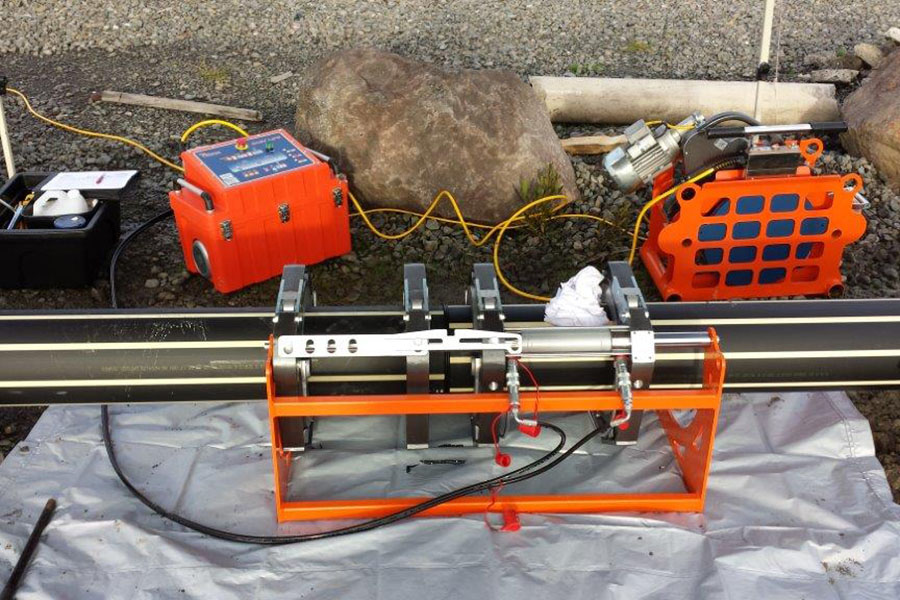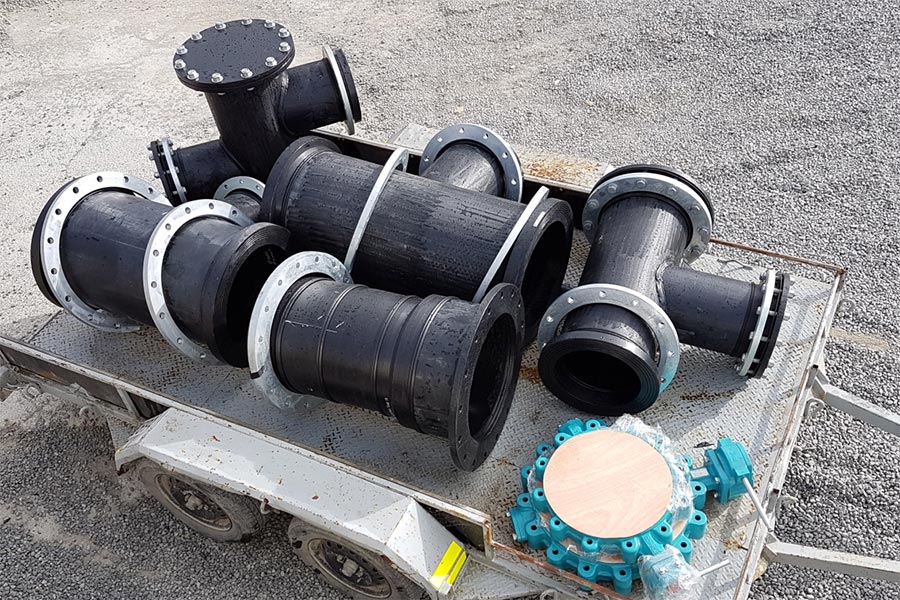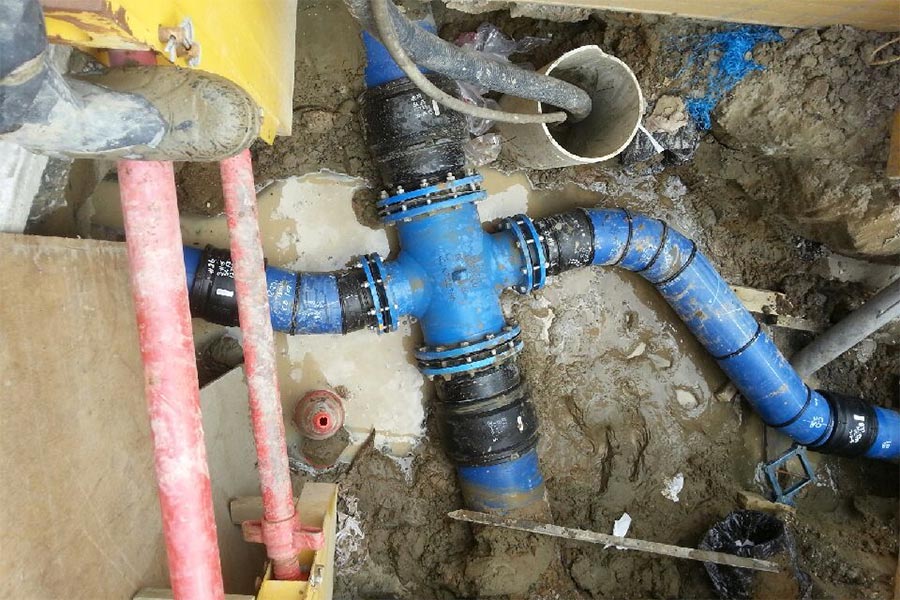Butt fusion welding is the name given to hot plate welding of thermoplastic pipes. Pipe ends are brought together in the chassis of a machine where two separate pipes ends are clamped, faced square and then brought together against a heater plate under pressure for a period of time that is calculated by the pipe size – the thickness off the pipe and the cylinder area of the machine.
The heating phase, sometimes referred to as ‘bead up’, is where the pipe ends are pressed against a heated plate for a period of time. This is followed by the ‘heat soak’ phase where the pressure is reduced to just hold the pipe ends on the hot plate. This allows time for the heat to soak into the material at the pipe ends.
After the heat soak phase, the hot plate is removed and the pipe ends brought together. The time taken to do this is called ‘change over’ and needs to be as short as possible. The final phase is the welding/cooling time, predetermined subject to pipe diameter and wall thickness.
The welding process allows the technician to produce what are referred to as strings that can be anywhere from 24m up to 1000m depending on the allowable work site. The pipe string is then introduced into the trench where it is joined together either by butt fusion or electrofusion welding.




